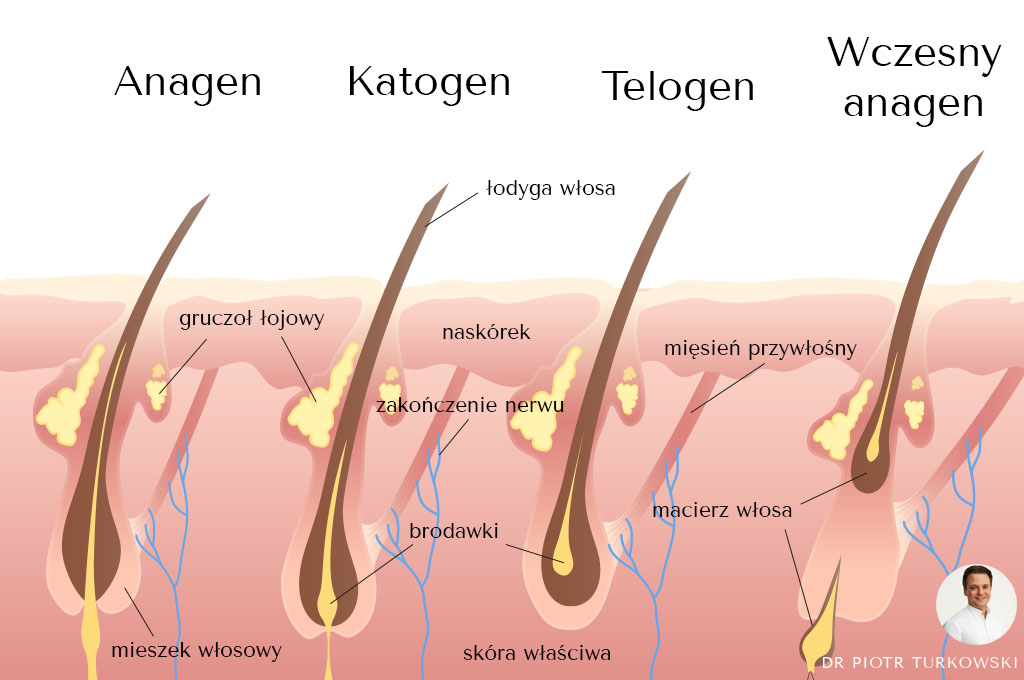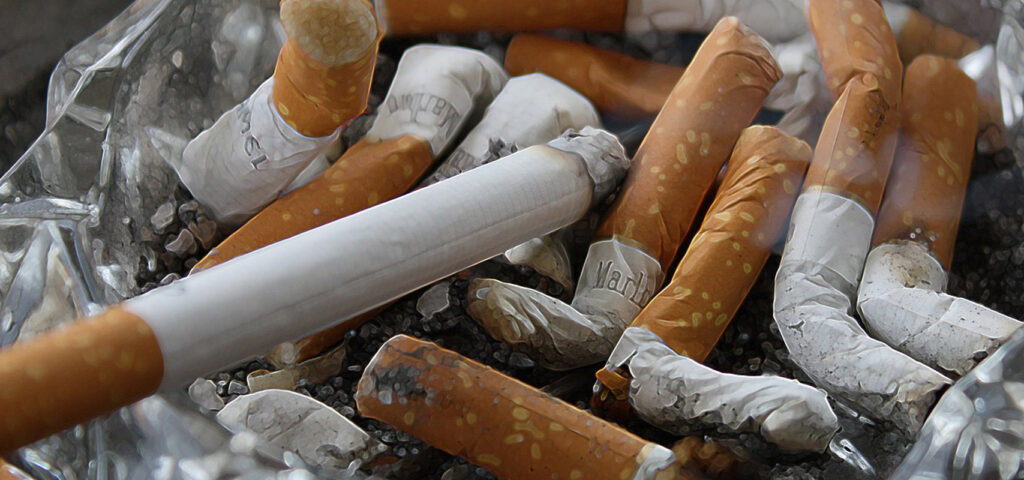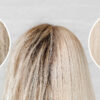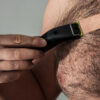It is undeniable that cigarette smoking – both passive and active – has a very negative impact on our health. The substances in tobacco smoke not only lead to addiction, but are the cause of a number of dangerous and even deadly diseases. In addition to degrading our health, they also do not spare our skin, teeth or hair. A yellowed smile, full of discoloration, an earthy complexion, visible wrinkles – these are the problems that await all those who regularly reach for a cigarette.
Smokers and smoke inhalers are at risk of premature baldness, weakened hair follicles, deterioration, brittleness and vulnerability, studies show. In addition, the regenerative processes slow down considerably and it is very difficult to restore the hair to its former appearance and shine.
Let’s find out how cigarettes affect hair and if there are any effective methods to nourish and strengthen it after quitting smoking.
- 1. How does smoking affect the life cycle of hair?
- 2. How do the ingredients in a cigarette affect hair?
- 3. Will quitting smoking help you get your hair back?
- 4. How can a trichologist help treat smoker’s alopecia?
- 5. Trichology treatments to restore hair density after quitting smoking
- 6. Hair transplantation with the modern method FUE WAW DHI.
How does smoking affect the life cycle of hair?
Physiologically, the hair growth process consists of three phases: anagen, catagen and telogen. An adult has on his head about. 150,000. hair follicles, which at any given time are in different phases of life, making the loss and regrowth of new hair intertwined. The development of each hair proceeds individually, depending on its level of nutrition and oxygenation.
Improper balance and disruption of the various growth phases, can lead to excessive hair loss or the formation of inflammation of follicles and roots. One of the factors that will negatively affect hair development is smoking. How does it affect each stage of the hair cycle?

- Anagen phase (growth phase):
The anagen phase is the phase of active hair growth. It lasts an average of 2 to 7 years and depends on, among other things. on genetics and the volume and number of cells present in the dermal papilla. During this phase, the hair follicle is active and produces a hair shaft – about 1 cm per month. About 85% of the hair on our head is at this stage of development.
Smoking will shorten this phase, which means the hair will have less time to grow and reach its full length. As a result, they will become unnourished, thin and weakened, and more prone to falling out.
- Catagen phase (transition phase):
The catagen phase represents the transition between the growth and resting phases. It usually lasts from 2 to 3 weeks. During this phase, the hair follicle slowly disappears and the hair stops growing.
- Telogen phase (resting phase):
The telogen phase affects about 10% of the hair on the head. It lasts about 3-4 months. Hair at this stage moves toward the surface of the skin and begins to lose melanin. The hair papilla begins to stimulate the formation of a new matrix. When the old hair falls out, the telogen phase ends and the whole cycle starts over again.
Cigarette smoking, affecting the hormonal balance (especially increased dihydrotestosterone (DHT)) will prolong this phase, meaning more hair will remain at rest and less new hair will grow. Toxic substances present in cigarette smoke weaken hair follicles, lead to damage to their DNA structure, and by constricting blood vessels, disrupt the flow of nutrients. It is not hard to guess that the result is the formation of inflammation on the scalp, a surge of free radicals and cell degradation due to oxidative stress. The fewer healthy follicles, the less newly formed hair. The hairstyle becomes thinned and its condition decreases significantly.
It is worth noting that the effect of smoking on the hair growth cycle can be individual and depend on various factors, such as age, gender, genetics and overall health. Not all smokers experience significant hair loss, but there are enough scientific studies and clinical observations to support a link between cigarette smoking and hair loss.
How do the ingredients in a cigarette affect hair?
The composition of cigarettes is very complex and contains many toxic chemicals that can affect health, including hair health.
Nicotine, which is the main addictive ingredient in cigarettes, can affect blood circulation in the body, including the scalp. By clogging and constricting blood vessels, it interferes with the flow and availability of nutrients and oxygen to hair follicles, reducing their ability to produce new hair. It also increases susceptibility to inflammation, causing hair to die and shorten its life cycle. Nicotine also accelerates the graying process.

Components present in cigarette smoke play a significant role in damaging the DNA and structure of growing hair. Carbon monoxide, nitrogen oxide, formaldehyde, benzopyrene and many other toxic compounds affect the health of the scalp and hair follicles, leading to weakened and insufficiently nourished hair. The tarry substances released when tobacco is burned settle on the scalp and hair, leading to dryness and weakness. The hairstyle becomes dull, brittle and prone to damage.
Heavy metals such as cadmium, lead and mercury are also found in the smoke, which also contribute to excessive hair loss and deterioration.
Whether we smoke two cigarettes or two packs a day – we are much more likely to develop some degree of baldness. As studies show, compulsive smokers virtually always have increased symptoms of androgenetic alopecia, compared to non-smokers.
Will quitting smoking help you get your hair back?
By breaking the harmful relationship with nicotine permanently, we increase the likelihood that our hair will return to its former condition. It is worth noting that any results can only come from giving up smoking completely – both traditional cigarettes and e-cigarettes.
Destroyed hair follicles, a poorly nourished scalp with a disturbed pH, and dry and brittle hair take a long time to regain their former luster. The first effects will mainly involve getting rid of the suffocating, intense smell of cigarette smoke from our hair. They will start to become more manageable and less oily.
However, it can take up to several years for the hair to return to its normal life cycle, the process of rebuilding the hair follicles and regenerating the scalp, depending on the case. In addition to quitting smoking, it is extremely important to incorporate proper grooming, keep your body hydrated and eat a nutritious diet rich in antioxidants , vitamins and minerals necessary to keep your hair in good condition. Sometimes, however, the damage is so deep that it cannot do without specialized help. In extreme cases, a hair transplant may be the only option.
How can a trichologist help treat smoker’s alopecia?
The trichologist plays an important role in treating baldness in smokers, offering specialized care and a range of treatments to stimulate hair regrowth. The first step of trichological treatment is a thorough analysis and examination of the scalp and hair during a trichoscopic examination. It allows an accurate assessment of the condition of the hair follicles, hair structure, all layers of the epidermis, dermis and subcutaneous tissue, and the detection of possible diseases or inflammation. The result obtained makes it possible to determine the specific cause of baldness and plan the appropriate treatment.
There are several methods to help regain the former density of hair on the head, and they are also characterized by varying degrees of invasiveness. The therapeutic plan is always tailored to the smoker’s individual needs and capabilities.
The trichologist may also recommend taking various medications or pharmacological preparations to alleviate the symptoms of baldness and stimulate hair regrowth. This can include minoxidil or finasteride, which are applied topically and work in the hair follicles. Such specialized treatments, combined with treatments and proper nutrition, can produce surprising results.
Trichology treatments to restore hair density after quitting smoking
One of the less invasive methods of deep cleansing, nourishing and improving circulation in the scalp are scrubs. This skin care treatment is not only, quick, easy and pleasant, but also has many benefits. Properly selected exfoliating preparations will thoroughly remove the remains of sebum, impurities, dead skin or residues from cosmetics and cigarette smoke. The massage, which is part of the treatment, stimulates microcirculation and improves the delivery of oxygen and nutrients to the hair follicles. Regular use of scalp scrubs will help restore physiological pH levels, improve blood circulation and scalp condition, hair will be stronger and less prone to fall out. Oxygenated hair follicles will also be able to produce new hair.
An innovative method of combating baldness is carboxytherapy of the scalp. It uses the properties of medical carbon dioxide, applied with a thin needle directly to the scalp. Carbon dioxide dilates blood vessels and stimulates blood circulation, which improves the flow of oxygen and nutrients to skin tissues and hair follicles. As a result, metabolic processes are intensively stimulated and empty follicles are stimulated to produce hair.
Carboxytherapy of the scalp is used for the treatment of androgenetic alopecia, alopecia areata, telogenetic alopecia and for the treatment of hair loss of various physiological causes. It can be used in both men and women. The sessions last about 30 minutes, and the results in the form of reduced hair loss and the appearance of the so-called “hair loss”. baby hair, are noticeable after just a few treatments.
Another way to restore lost condition and density to the hair is through mesotherapy of the scalp. At the office of Dr. Piotr Turowski, we can benefit from a treatment based on the action of XL Hair, which is distinguished by a specially developed composition containing more than 50 different active substances. It includes. Vitamin B12, B9, B3, A, E, fatty acids, antioxidants, amino acids, hyaluronic acid or fibroblast growth factors necessary for deep revitalization of the scalp and hair follicles.
Mesotherapy treatment involves the subcutaneous injection of a product using micropunctures. Their amount depends on the condition of the patient’s scalp and hair. The entire procedure takes 15-20 minutes. Once the active ingredients enter the body, they start the process of stimulating new hair growth, inhibit hair loss and improve the condition of the hairstyle. The product improves microcirculation, stimulates collagen and elastin production, and revitalizes hair follicles. It also prevents the formation of inflammation of the scalp. As a result, after just a few treatment sessions, hair becomes noticeably thicker, stronger, denser and more resistant to shedding.
Hair transplantation with the modern method FUE WAW DHI.
In very advanced cases, hair transplantation may be the only way to regain the luscious hair lost through smoking. While it may seem like a complicated and difficult procedure, modern hair transplantation techniques are minimally invasive and leave no scars, and you can go home after the procedure is complete.
FUE WAW DHI hair transplantation method allows hair to restore its natural growth cycle and inhibit hair loss. The method is based on a combination of three innovative technologies: FUE (Follicular Unit Extraction), WAW (Water Assisted Liposuction) and DHI (Direct Hair Implantation).
FUE is a technology that takes individual hair follicles from abundant areas, that is, those areas on the head where hair is thick and healthy. The harvested follicles, along with a small amount of surrounding tissue, are then placed in special containers, evaluated and prepared for transplantation.
Accurate and precise follicle retrieval is made possible by the WAW technique, which uses a jet of pressurized water to pre-separate individual hair follicles from the scalp. This translates into high performance and minimal damage to the skin.
The harvested and selected hair follicles are individually implanted using the DHI method, directly into the recipient area. Everything is done after the application of local anesthesia, so the patient does not experience any pain. Using a special tool, the follicles are inserted directly into the scalp with a thin needle (without the use of a scalpel), which also minimizes pain and possible damage to the skin. After the procedure, the doctor applies a special ointment to the skin to speed up healing. The treatment lasts from 3 to 12 hours.
The final results of hair transplantation are visible after about 9 months. Hair regenerates and grows gradually, so the whole process takes time, nevertheless, patients confirm that the final result is worth it.





